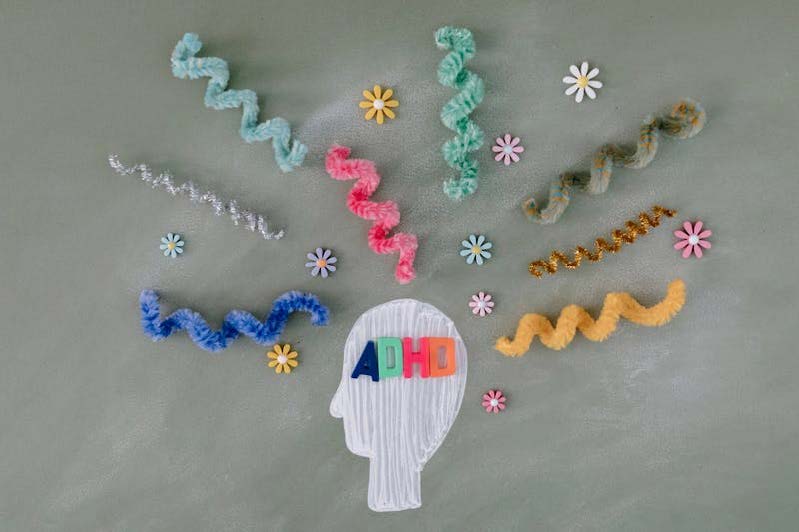While I may not personally struggle with ADHD, many of the people in my life do. My
partner has ADHD, several of my friends have ADHD, some of my classmates and
coworkers have ADHD, and many children and students I work with also have ADHD. In
almost every setting I find myself daily, there is at least one person with a degree of ADHD.
My purpose in this blog post is to invite my audience to begin considering how they may
effectively support individuals with ADHD in personal and/or professional contexts. I focus
on children and students with ADHD in the resources I provide here, but most concepts
and strategies may be modified to suit all age groups. I would like to offer some strategies
that I use in my personal, academic, and professional relationships. Some of these were
learned from experience, while others were learned through my own research and study of
ADHD, and some were gleaned from my academic studies in ECE (early childhood
education) and CYC (child and youth care), and other online resources.

What is ADHD?
According to the American Psychiatric Association (2013), Attention-Deficit/Hyperactivity
Disorder (ADHD) is characterized by a persistent pattern of inattention and/or
hyperactivity-impulsivity that interferes with functioning or development. Symptoms often
include difficulty sustaining attention, hyperactivity, and impulsive behavior, which can
impact academic, occupational, and social settings. For example, a child with ADHD may
experience difficulties with task completion, time management, and impulsive behaviours,
such as interrupting conversations and difficulty waiting a turn or sitting still. Treatment
typically includes behavioural therapy, medications, or a combination of both. In addition to
challenges in attention, hyperactivity, and impulsivity, ADHD may also affect body image,
sleep, and self-esteem.
Some common characteristics of children with ADHD:
(Allen et al., 2020; Saskatchewan Polytechnic, 2023)
● Fidgeting and squirming during quiet times
● Usually uncomfortable sitting still
● May run or climb excessively
May experience challenges with impulse control
● Difficulty waiting for a turn
● Interrupts conversations
May experience challenges with attention
● Appears to be “daydreaming”
● Difficulty following instructions or completing tasks
● Difficulty remembering details, loses things, and struggles with organizational skills
● Difficulty staying attentive in group

Relational strategies:
● Seek to understand all feelings, thoughts, and behaviours
● Communicate clearly and concisely
● Practice patience and unconditional positive regard
● Validate all feelings and reassure students that they belong
● Recognize and challenge negative thought patterns (consider implementing
cognitive behavioural strategies)
Practical strategies:
● Offer redirection, suggestions, and choices
● Encourage them to be themselves
● Offer a safe space for learning and making mistakes
● Learn more about ADHD and find resources that fit your particular student
● Maintain predictable routines and schedules; design routines with flexibility
● Be patient with yourself as you learn more and do better
● Use engagement strategies (rewards, encouragements, physical challenges)
● Provide opportunities for movement
● Provide visual aids
● Give reminders and use timers
● Offer five-minute warnings to help students complete an activity and let them know
what to expect next
● Explore mindfulness together and find calming strategies
● Consider implementing strategies based on cognitive behavioural therapy
When designing physical space and routines to support students with ADHD, Allen et al.
(2020) suggest:
● Keep the environment neat and tidy
● Limit the amount of loose materials
● Balance active and quiet times
● Balance large and small group times
● Balance adult-led and child-led activities
● Use an interest-based or emergent curriculum
● Use consistent transition times
Early Intervention is key!
● Seek professional diagnosis, if possible
● Seek resources and learn more about ADHD
● I provide some resources at the end to help you get started

ADHD interventions for parents
Create a Simple List of Rules:
Focus on he most import ant behaviors by creating a short and straight-forward list of rules. Let the small stuff slide. If your child completes their homework and chores but forgets a dirty dish, focus on the accom plishments rather than the mistake. Perfection is an unrealistic expectation.
Use Praise:
Praise your child for simple good behaviors that you would like them to continue. A simple “good job” or a smile can go a long way. If you’re finding it hard to find behavior to praise,compliment your child for extended periods where they do not get into trouble.
Create a Reward System:
Rewards are more effective than punishments to motivate a child to change their behavior.
Reward systems can be as simple as a token for each day of the week a specific good behavior is completed, which can then be exchanged for a reward. Talk with your child to figure out what reward they want, and how many tokens it will cost.
Homework Hour:
Set aside a time each school day for your child to comple te homework. If there are no assignments for that evening, they can still spend the time studying or reading. This routine reduces the chance that your child will forget or avoid their homework. Additionally, homework hour reduces the reinforcement that children usually receive for completing their homework as quickly as possible .
Establish Structure:
Children with ADHD do their best when they know what to expect. Est ablish a routine for homework, meals, playing, bedtime, and preparing for school. For example, your child may learn to brush their teeth at a specified time, get a glass of water, and then layout their clothes for the next day. You can use a reward system to begin establishing these routines.
Use Consequences Effectively:
Consequences should be explained in advance, they should occur immediately after the unwanted behavior, and you must always follow through with your stated consequence. Time out and the removal of privileges are effective. Be careful not to over punish your child will not remember why they are grounded after 2 weeks and you have no leverage if your child has nothing.


